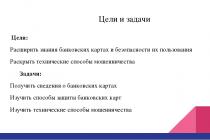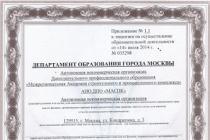Reinvestment is funds in the form of income and benefits received by the investor from a successful investment in any object and directed again to the same object.
Also, reinvestment is associated with additional or repeated investment of capital, regardless of whether this investment is made in the same object or in a completely different one. For example, reinvestment of government debt.
It represents the fastest possible increase in income through systematic re-investment of funds into the investment object.
The disadvantage of reinvestment is that it receives all profits only at the end of the investment period.
This is reinvestment. Initial investment.
You are. The funds you have at your disposal are conditionally 100 USD. The object of your investment is a fund that pays 1 percent daily. Your investment period is 10 days.
Let's figure out how much money you can earn by carrying out reinvestment, and how much you will lose by abandoning them.
If you withdraw your income every day, then in ten days you will receive $10 in net profit. (1 percent of $100 = $1 * 10 days = $10).
If you reinvest daily, this increases your profit by 5 percent. Agree, getting more profit from the same amount is not so bad.
Now let's figure out why this happens.
This happens due to the fact that in the first case, interest is calculated on a fixed amount of $100 every day, the amount is fixed due to the fact that you take the daily profit.
And when implementing reinvestment, this amount increases every day. That is, on the first day it is 100 dollars, on the second it is already 101 dollars, since you do not take the profit for one day in the form of a dollar, but re-invest it, etc.
On the first day, you conditionally earned 1 dollar, you do not take it back as profit, but reinvest it, and the very next day interest will be accrued not on 100, but on 101 dollars, accordingly more interest will be accrued and the profit will also be greater. And in the end, after 10 days, you will receive not 10 dollars of net profit, but 10.5 dollars, which is 5 percent more.
It is worth noting that this is a simple example aimed at explaining the essence of reinvestment and the advantages of this method.
Each of us dreams of having a permanent income option that will increase and accrue regardless of different situations and efforts made. These kinds of dreams became reality thanks to the opportunity invest and reinvest your capital.
With even basic knowledge of economics and a minimum amount of funds, you can invest capital on favorable terms and receive your rightful percentage of the profit.
Advice! To increase your capital, you should adhere to a simple rule - money must work and bring in money.
Reinvestment of profits- This is the process of re-investing funds that were received subsequently from investment.
You can consider a similar option using the example of any bank deposit, when the depositor receives his interest on the deposit, but does not withdraw it, but adds it to the existing amount. By performing such actions, he ends up receiving more money than planned.
You can reinvest both your own capital and foreign capital in order to add and increase previously invested investments.
Is reinvestment beneficial for the investor?
For an investor, the option of reinvesting funds is very profitable, since in this way it increases its own income. The more often he reinvests, the more profit he makes. For example, if we consider the monthly option of reinvesting on bank deposits, you can see how the initially invested amount increases several times.
Perhaps it is for this reason that not all banks offer their depositors similar conditions in the deposit agreement. This type of strategy is also known as “compound interest,” where interest is compounded on interest. In this case, the investor’s profit will depend on the number of repeated deposits; the more there are, the higher the income.
In order for the repeated deposit of money to be truly profitable and benefit the investor, the following conditions must be met:
- The longer the reinvestment period, the more profitable it is for the investor.
- All profits earned from the investment should be reinvested into the investment.
- When deciding to re-invest their own funds, an investor should be well informed about everything that is happening in the financial market in order to be able to respond to the situation in a timely manner.
- You need to be prepared to take risks and understand that reinvestment cannot protect, for example, from inflation or other nuances characteristic of the economy.
What is reinvestment of profits?
 the main objective reinvestment is to increase income as quickly as possible by increasing the efficiency of an existing business or investment, or by opening a new business.
the main objective reinvestment is to increase income as quickly as possible by increasing the efficiency of an existing business or investment, or by opening a new business.
Reinvestment of profits is the reinvestment of the original source of income, or, more simply, increasing the level of profit at the expense of funds that are commonly considered interest.
Depending on the investment objects, there are:
- real investments;
- financial contributions.
Real investments represent the investment of funds in assets that are related to the operating activities of strong and large commercial organizations.
Financial deposits (investments)– this is an investment of one’s own or foreign capital in financial instruments that are not characterized by physical expression, for example, PAMM accounts, securities and other similar options. Such transactions may be speculative or long-term in nature. Bonds (debt securities) are a prominent form of financial investment.
Depending on the time period, financial deposits are:
- short-term – allow you to make a profit in a clearly defined and fixed period;
- long-term - promote participation in strategic goals that are aimed as a direct impact on the management of business and affairs.
The essence of the process
The main objective of the reinvestment process is to increase one’s own or foreign income by reinvesting earned funds. Such contributions are accrued between investments of cash or other valuables in business development.
 The reinvestment procedure is characterized by a high degree of benefit for the investor.
The reinvestment procedure is characterized by a high degree of benefit for the investor.
Since his capital increases from two sources:
- he independently increases his income by adding new interest to the existing amount;
- There is an additional process of calculating interest on the new invested amount.
Income dependence
Since most organizations consider reinvested profits to be the main source of their financing, there is some distribution of profits within this structure.
Since the payment of dividends significantly reduces the real volume of reinvested funds, the decision on its size, as well as the immediate order of payments, acts as a result of financial activity that affects the attracted sources of capital.
Reinvestment of profits is one of the most common methods of the cheapest forms of financing investment programs. Capitalization provides an opportunity to eliminate additional costs that will be needed to attract new options and sources of financing, and also allows you to maintain control over the activities of the institution in the hands of the old owners who have been working with it for more than one year.
PAMM accounts
Many properties and features of repeated investment of funds can be learned using special PAMM accounts. They are a more well-known and accessible investment option that does not require large initial capital.
Positive qualities of PAMM accounts:
- The ability to manipulate the account, for example, replenish or withdraw the required amount at any convenient or necessary time.
- The presence of your own money in the account in addition to the investor’s funds.
- Low level of financial initial capital.
The reinvestment procedure is mandatory if the deposit is in a PAMM account with brokerage companies. At the same time, the main task of the investor is to replenish the account and withdraw funds from it. You don’t have to withdraw money; then it automatically becomes part of the deposit and works like initial capital.
Advice! For your own safety, it is best to distribute funds between different accounts, the so-called diversification of capital.
Example. If the initial deposit was $1,000, then having received a 6% return, the amount will be $1,060. When reinvesting profits next month, interest will be accrued not only on the initial $1,000, but also on the $60 earned.
Conditions for successful reinvestment
The main conditions for successful reinvestment:
- The profit will be greater if the process of repeated investment of funds occurs more often.
- If reinvestment is carried out at least once a month, such a process can be considered profitable. A better option is if it is held weekly.
- The compounding process continues as long as the investment exists;
- The larger the starting capital and the investment period, the more profitable and efficient the process of re-investment of capital.
Important! The main condition in reinvestment (capitalization) is not to withdraw earned interest, but to make it work and bring additional profit.
Reinvestment is a relatively cheap way of financing.
Each investor independently makes a decision regarding the distribution of funds and decides whether reinvestment is the main or additional source of income for him. If you use the process of reinvesting money as the main financial source, you should know the market very well and be able to feel it.
An investor, in such a situation, needs to:
- quickly respond to various types of changes in the market;
- be able to adapt to the rules and laws existing on it;
- don't be afraid to take risks.
If a comparison is made between the capitalization process and profit from shares, we can see that reinvestment is the least risky and cheapest option for financing. But we should not forget about such a concept as inflation, which is so characteristic of the Russian economy.
Greetings! Tell me, which of us doesn't want to be successful and financially independent? I believe that those who say that material wealth is a completely insignificant issue for him are simply lying. Since our main task on the path to wealth and prosperity is to minimize labor costs and maximize profits, it is quite obvious that we can achieve our goal only by creating powerful source of passive income.
In previous articles we have already talked about providing yourself with additional income. Today I want to tell you how to get greater returns from the same capital. To do this, we need to learn distribute capital correctly received as a result of an investment transaction. Reinvestment is our only solution to this problem. We’ll talk about what it is, how it works, and where to start right now.
What is reinvestment?
So, it’s no secret that the two main tasks of an investor are receipt and its monthly or quarterly increase through reinvestment.
Under the concept "Reinvestment" You and I will understand the repeated or additional investment of the profit that was received as a result of the initial investment of capital to obtain passive income. Simply put, this process is nothing more than re-investing the interest received, accrued after a certain period of time. Interest on a reinvested deposit is calculated taking into account those funds that have already been added to the amount of the fixed capital.
Usage

Reinvestment technology appeared in the West and is now actively used throughout the world. Its use allows much increase the profitability of the initial deposit, regardless of what its starting size was. Whenever you replenish your deposit, remember that the funds are added to the initial deposit amount, and interest is calculated based on the updated amount, formed at the time of replenishment of the account.
Many Western banks offer clients exclusive conditions for deposits, which include the possibility of reinvesting profits, thereby creating mutually beneficial cooperation between the investor and the bank. For us, as investors, the opportunity to reinvest interest is a real chance in the shortest possible time significantly increase initial capital, receive the amount of money necessary to provide passive income.
Types of reinvestment
Depending on what object is being invested, reinvestments are divided into:
- real- investment of capital to create real assets associated with the implementation of operating activities of various economic entities
- financial- investing capital in all kinds of financial instruments, for example, or in the Forex market ()
In the latter case, reinvestments can be either oriented towards long-term investment or have an exclusively speculative nature.
Forms of reinvestment
Financial reinvestments can take the following forms:
- debt securities
- equity securities
- bank deposits

the main objective speculative financial reinvestment is to obtain income in a specific period of time. As for long-term financial reinvestments, their strategic goal is the possibility of taking part in the management of the investment object.
Calculation formulas
In order to understand the correctness of your decision regarding investing in a particular project, you need to pre-calculate potential benefit. The reinvestment calculator located on the right side of the main page of the blog will help us in this matter. The principle of its operation is quite simple and is in many ways similar to a compound interest calculator: you enter all the necessary data, and the calculator automatically calculates the expected profit.
If you do not trust software products, you can calculate the profitability of reinvestments using the formula:
F.V.= PV * (1+i)^n
- F.V.- this is the amount of expected income that we will receive at the end of the reinvestment period
- PV- initial investment amount
- i- interest rate
- n- reinvestment period
Will help in making a decision regarding whether to invest money in a project or not, and reinvestment rate. With its help, you can estimate the shares of a company’s profit that:
- sent by the company to pay dividends
- remain at the enterprise and invest in production
K=(Profit-Dividends)*100%/(Turn+Inv+PA+RK)
- TO- reinvestment ratio
- Profit- cash received by the company as a result of economic activities
- Dividends- dividends paid
- Obor- total cost of equipment including depreciation
- Inv- investments
- PA- other assets
- RK- working capital
The optimal value of this indicator is 8-10% .
How reinvestment works
The main task that must be solved in the reinvestment process is increase in income through repeated investment of funds earned as a result of investment.

These types of deposits are most often used to receive additional income, which can subsequently be used for your own purposes.
Reinvestment is beneficial for investors because it helps increase their capital. This happens due to:
- Independent increase in income as a result of adding interest received as a result of the investment to the initial amount of the deposit
- An additional process for calculating interest on the amount received as a result of reinvestment
The secret of success of reinvestment technology
For reinvestment to be successful, it is necessary strictly comply with a number of requirements:
- Increase profitability through more frequent reinvestment
- Try to reinvest funds at least once a month, and ideally weekly
- Interest will continue to accrue as long as the original amount invested continues to exist.
- The larger the amount of starting capital and the investment period, the more effective and profitable the repeated investment will be.
The most important condition that must be met in the capitalization process is saving earned interest to continue their performance and generate additional profits.
Skills that an investor develops
In general, reinvestment is considered one of the cheapest financing options. Each investor has the right decide your own fate distribution of their funds and determine whether there will be reinvestment main or additional source of income.

If an investor is going to use reinvestment technology in order to provide himself with a source of basic income, he will have to thoroughly study and feel the market. In this case, the investor will have to learn:
- react quickly to certain market fluctuations
- fit to the laws in force on the market and follow the rules established on it
- to risk
If we compare the process of capitalization and making a profit as a result of investing in shares, it will become quite obvious that reinvestment will be much less risky, and most importantly, a cheap way of financing. However, we must also remember about such a phenomenon as inflation, which, unfortunately, is literally an integral component of our economy.
Example of reinvestment
Well, now let's move on to something more pressing and a little let's count the money. Let's assume that you, as an investor, have 1000 dollars free funds that you plan to use as initial capital. You are going to invest this money in a PAMM account. In this case, a fee of 50% is charged for trust management services.
The profitability of the manager's PAMM account is presented as follows:
- January +20,5%
- February +10,87%
- March +21,06 %
- April +11,02%
- May +10,77%
- June -5,1%
No reinvestment

In case we will not reinvestment technology is used, the profitability of such an investment will be:
- in January +102,5 dollar
- in February +54,35 dollar
- in March +105,3 dollar
- in April +55,1 dollar
- in May +53,85 dollar
- in June -25,5 dollars
If you withdraw the profit received from the project every month, the return on investment will be 34,5% or $345.6.
With reinvestment

Now let's study the profitability of the same investment, provided that you reinvest your monthly profits. In this case, the income will be:
In January +102,5
dollar
in February +59,92
dollar
in March +122,4
dollar
in April +70,79
dollars
in May +73
dollar
in June -36,43
dollars
Thus, subject to monthly capitalization, the total income will be 39,22% or $392.18. Reinvestment has significantly increased the return on investment. Total in 6 months your investor income increased by 4.72%.
Example of reinvesting interest on profits
To consolidate the material presented, I propose to look at another practical example. Imagine what you have at your disposal $10,000, which you place in trust. The average return on investment is 25% per annum. That is, annually you will receive $2,500 in passive income, which you can safely spend on your whims and pleasures. In just 4 years, your income will be $10,000, which means the investment will give you a 100% profit.
Now let's find out how much you can get in 4 years if all the profit received will be reinvested. For convenience, I will present this information in the form of a table:
| Period, year | Amount at the beginning of the period, $ | Profit, $ | Amount at the end of the period, $ |
|---|---|---|---|
| 1 | 10 000 | 2 500 | 12 500 |
| 2 | 12 500 | 3 125 | 15 625 |
| 3 | 15 625 | 3 906 | 19 531 |
| 4 | 19 531 | 4 882 | 24 414 |
As you can see, literally by the end of the second year, the profitability of the investment made it possible to increase the initial deposit amount by half. And by the end of the investment period, after 4 years, the profit received exceeded the amount of the initial deposit by almost 2.5 times. Thus, final profit taking into account capitalization amounted to $14,414(against the $10,000 we received in the first case) or 144% . That is, the difference in profitability between these investment options was 44%. Moreover, if you extend the investment period, the profitability will be even greater.
Withdraw or reinvest - that is the question
Many representatives of small, medium and large businesses often have a problem, where to direct your income. Unfortunately, most people simply do not trust modern financial instruments, and therefore advise investors to immediately withdraw their profits. This allows investors to maintain their income and not suffer losses as a result of fluctuations that occur every now and then in the financial market, or any force majeure.
In turn, supporters of capitalization, on the contrary, insist that investors put their profits to work and invest them in various financial projects, of which there are many in our domestic market. Fans of reinvestment technology are confident that every investor who participates in capitalization does not risk their own savings in any way, since only passive income is sent to the investment toolkit.
Despite the existence of certain risks, capitalization still remains for most financial market players almost the only opportunity to increase their capital without much effort. In the long term, capitalization can bring quite impressive profit. In general, this is precisely its main advantage. The profitability of repeated investments depends on the interest rate, which is set by the founder of the investment project, and the time during which the investment will work.
Refusal of capitalization
If investors deliberately refuse to reinvest, they personally deprive themselves of the opportunity to maximize the income they receive. In this case, the main idea of financial transactions that involve investing personal funds is lost. Those who are just taking their first steps in the financial market and are just starting to master investment activities should remember the need to draw up balanced portfolio of financial instruments. Ideally, the portfolio will be filled with investment projects that can complement one another in a critical situation.

A categorical refusal of capitalization can be justified only on the condition that an individual, a business entity, receives an offer to invest his own funds in an unfamiliar and dubious project or financial instrument. In this case, refusal is not just desirable, but literally necessary, since unknown projects are often fraudulent schemes, the main goal of which is to collect funds from gullible and inexperienced people. To avoid becoming a victim of scammers, I advise you regularly monitor the domestic financial market. Trust your money only to trusted managers who have repeatedly proven their competence in investing your capital. Taking precautions in a timely manner will not only protect your money from loss, but will also allow you to significantly increase it.
Conclusion
If you find an error in the text, please select a piece of text and click Ctrl+Enter. Thanks for helping my blog get better!
Any financial investment involves generating income. It is desirable that its size be larger. Reinvesting capital is one of the ways to increase it - risky, but at the same time, effective. What do reinvestments provide? They help you achieve true financial independence. Let's figure out how it works.
Factors and directions of reinvestment
Reinvestment of capital is when an individual or legal entity reinvests in any financial instrument the income, dividends or interest that the investment in a particular asset brought. This business strategy is used to turn the profit from an investment into even more income.
The amount earned from reinvestment depends on two main factors:
- the volume of “re-investment”, or in other words, on whether the entire profit is re-invested, or whether only part of it is invested in any financial instrument;
- how often reinvestment occurs.
Earnings can be sent to:
- into the same financial instrument (same company, existing deposit). As a matter of fact, reinvestment is considered one of the simplest and most accessible ways to increase investments and your share in any business. By the way, many banks provide clients with the opportunity to reinvest the interest received from the deposit. Thanks to this, along with the deposit, you can increase your profit, because when calculating interest, the added reinvested amount is taken into account;
- With the help of reinvestment, it is also possible to expand your personal investment portfolio. To do this, you need to produce money, place your earnings in other assets (for example, purchase government bonds with the capital that the assets of a private corporation brought in).
Financial and real reinvestment
Reinvestment is divided into several types:
- Financial. This is when the capital received from an investment is invested in instruments that are not tied to a specific profit-generating business. We are talking about PAMM accounts, currencies, and raw materials (oil). For example, they can reinvest in order to receive a stable income. But more often, currency and raw materials are bought in order to make extra money on their short-term growth.
- Real reinvestment. The funds earned are invested in some serious business that can generate stable profits and bring constant dividends. An investor, for example, buys a share in a large corporation, opens or replenishes a long-term deposit, and purchases some real estate or land to rent out.
Reinvestment example
To better understand how profitable reinvestment is, here's a simple example:
- An individual or legal entity buys securities of a company whose value is equal to 10% of its total market capitalization, and after a year receives income equal to 2% of this capitalization.
- Then, with this 2%, additional shares of the same company are immediately purchased. Thus, the reinvestor already has 12% of the market value of this business.
- In a year, its dividend will no longer be equal to 2%, but to 2.4% of the value of the business. In general, this investor will already have 14.2% of the company's shares.
- If he invests them in securities of the same business, then another year later the dividend will increase from 2.4% to almost 2.9%.
- If an investor buys shares of this company again, he will already have 17.1%! Thus, in just 3 years you can increase your share in the business by more than 70% ((17.1-10)/10)! This is how compound interest works: the profit received is added to the original amount and begins to take part in creating new income.
But if the investor were simply content with the investment, he would receive approximately 30% of his initial contribution, that is, more than half as much.
Increasing profits - important notes about reinvestment
To increase your profits with this strategy:
- It is not at all necessary to invest the entire amount of your earnings. For example, Warren Buffett, a famous financier and one of the richest people on the planet, whose fortune at the beginning of 2018 exceeded $100 billion, believes that reinvestment of 50% of income is quite sufficient for a very rapid increase in subsequent income;
- most successful investors reinvest profits once a month. This is very profitable, because for example, if monthly earnings are equal to 10% of the investment, then after just a year the total amount earned from reinvestment will be more than 3.5 times greater than the initial investment. If you reinvest only once a year, the total amount will only double.
A small but successful investment of even an insignificant amount can serve as a start to increasing capital. Reinvesting the income received will gradually increase your financial income. If you constantly study the situation on the market, and do not “go with the flow”, after some time the return on invested capital will become noticeable.
Reinvestment of profits is the re-investment of the profits received from the initial deposit in order to generate income. That is, in essence, the funds that were accrued in the form of interest between reinvestment periods are added to the deposit. The number of additions is equal to the number of reinvestments over the total deposit period. After each addition, interest is accrued on the deposit amount along with these same additions.
Is reinvestment beneficial for the investor?
The benefits of such an investment strategy, sometimes commonly called “compound interest,” or compounding interest on interest, are obvious. In contrast to “simple interest”, when accrual occurs on the initial capital. This may be why Russian banks practically do not offer such forms of deposits for individuals. Or they use a sufficiently large time interval for reinvestment. Although Western banks have long been willingly practicing this form of working with deposits for the business world.
The investor's income in this case will be higher, the more often the interest is reinvested (RP). Thus, a monthly RP for just a few years allows you to increase the initial deposit several times. Accordingly, weekly investing is even more profitable.
What is reinvestment of profits using the example of other investment instruments. PAMM accounts
The process of reinvestment is well illustrated by such a profitability tool as PAMM accounts. By the way, this instrument, available to most investors, has a low initial financial threshold. You can top up your account and withdraw money from your account at any convenient time. In addition, the manager is directly interested in the profitability of trading, since he has not only the investor’s money in the account, but also his own.
When, for example, a deposit is in a PAMM account of a brokerage firm, reinvestment always occurs. The investor can withdraw the profit or leave it in the account; no other actions are required from him. The non-withdrawn profit is added to the initial amount and begins to work as the original deposit. Another question is that, for the sake of your own safety, it is still recommended to distribute funds among different accounts - in accordance with the principle of not putting “eggs in one basket.” That is, to periodically carry out the so-called “diversification of capital” - in this case, the distribution of profits across different PAMM accounts.
Having invested, for example, 10 thousand dollars and received a profit of 4% (the total amount with profit will already be 10,400 dollars), when reinvesting next month, the profit will already be accrued on the amount of the deposit along with the profit.
Conditions for successful reinvestment
The process of compounding interest on interest will continue as long as the investment is made. The greater the amount of money at the start and the longer the time it remains in the account, the more effective and profitable the reinvestment (capitalization) process.
If through constant investment the size of the initial capital increases, then thanks to regular reinvestment the amount of profit on the same capital increases. The main condition here is one thing - not to withdraw the earned interest, but to provide them with the opportunity to work again and again.

Whether to choose to reinvest your capital as a source of income is a personal decision for each investor, depending on his ability to sense the market, quickly respond to its changes and personal willingness to take risks. Although, in comparison with the same shares, whose income is more realistic, but the potential risk is incomparably higher, the capitalization looks more attractive. On the other hand, one should not discount such an inevitable factor for Russia as inflation.















